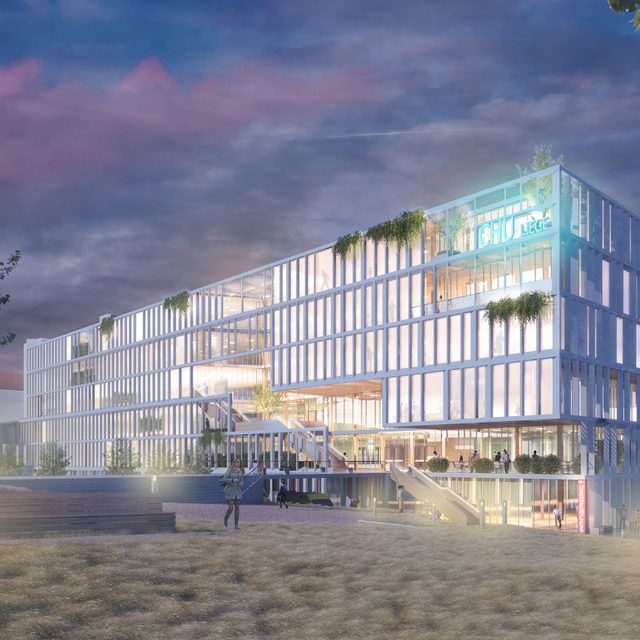
Engineering work on transformation of N8 highway in full swing
About
Engineering firm Sweco is busy preparing for the thorough redevelopment of the N8 highway as it passes through the municipalities of Alveringem, Lo-Reninge and Vleteren. From the border with Veurne/Alveringem to the centre of Oostvleteren, an 11-kilometre stretch of the National Route is to be transformed with safety and practicality in mind. According to Klaas Wittebolle: "Our assignment includes the full engineering work for the transformation of this road — from the preliminary design to the completion of the works — for the road itself, as well as the drainage systems and civil engineering works. Our clients are the West-Flemish division of the Agency for Roads and Traffic, and the municipalities of Vleteren and Alveringem."
On that basis, we're planning to convert the road to a 2+1 layout, with an alternating overtaking lane
Klaas Wittebolle
A turbulent history preceded the project, with more than 50 years of debate over what exactly was to be done. Klaas Wittebolle comments: "By entering into dialogue will all crucial actors right from the very start of our consultancy work and by systematically searching for solutions in which all parties stood to gain, we managed to reach a consensus on the preliminary design of the entire stretch in a timeframe of just one year. We are currently wrapping up the design phase, which will be followed by the compulsory purchase orders and the permit application for the first half of the project. In the meantime, we have also started preparing for the execution of the works, including in terms of coordination with the utility companies."
Traffic safety and flow
The flow of traffic on the road has been anything but smooth for some time now, and severe — sometimes fatal — accidents are a regular occurrence. The high volume of slow agricultural traffic and the many side roads and access points play a major role in this. Klaas Wittebolle provides more detail on the solution: "On that basis, we're planning to convert the road to a 2+1 layout, with an alternating overtaking lane. The plans also include parallel roads, to avoid any direct access points along the main carriageway. These parallel roads join up with the main carriageway every two kilometres at an intersection controlled by traffic lights."
A bicycle highway is to be built along the entire length of the project, as part of the F38 highway from Ypres to Veurne. Safe crossing points, good connections to the surrounding cycling network, cycling comfort and a pleasant journey through plenty of greenery and along a range of waterways were a major focus in this element of the project. Klaas Wittebolle comments: "This project marks a major improvement in terms of facilities for pedestrians, cyclists and buses, encouraging sustainable travel along the way. Aside from that, there are lots of other elements contributing to the sustainability of the project, including extensive de-paving, more space for water and nature, low-maintenance materials and minimal earth movement."

Blue and green
The area surrounding the project has been severely plagued by both flooding and long periods of drought over the last few years. The future drainage system of the N8 offers a solution to these issues with maximum infiltration in unpaved central reservations and shoulders, many kilometres of wadis, more water storage capacity in the Yser valley, buffer reservoirs along the waterways crossing the project, as well as a water collection reservoir for farmers.
As part of the design, the typical rows of trees lining the Ypres-Veurne road — which have come close to disappearing without a trace over the past century — will be replanted using a mix of climate-resistant tree species. On top of that, greenery native to the region will be planted along the buffer reservoirs, and the Yser valley will be renatured. That way, the future N8 will be flanked by uninterrupted greenery and valuable stepping stones for nature.
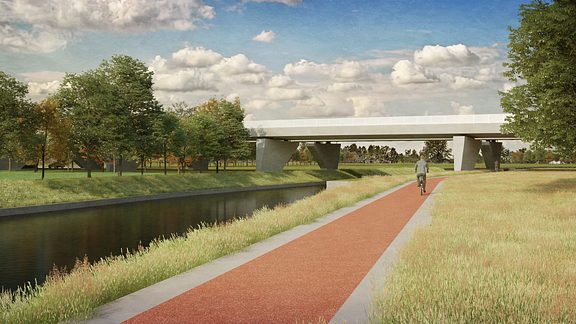
Three new bridges and green thoroughfares
To keep traffic moving at all times in both directions during the execution phase, the existing bridge will be replaced by two new road bridges. Aside from that, a bicycle bridge will also be added. Klaas Wittebolle provides more detail: "The three bridges across the Yser will have a sober, monumental design that will help restore the open landscape of the Yser valley. The road bridges, with two lanes each, will be built in post-tensioned concrete poured on site. The bicycle bridge will consist of steel cross girders with a composite road surface and will be anchored to the westernmost road bridge as a cantilevered structure. Within the project, the N8 will pass right through the centres of the villages of Hoogstade and Oostvleteren. Together with the redevelopment of these thoroughfares, the public space in these villages will also be upgraded."
The best chance of obtaining the necessary permits
The process of applying for permits is becoming ever more complex. For that exact reason, Sweco Belgium has set up an internal team consisting of a dozen experts, including an environmental expert, and urban planning expert and a legal expert. As Klaas Wittebolle puts it: "These colleagues possess a wealth of knowledge about the regulations involved in applying for a permit, and about how to do so in practice. This team advises us on all aspects of the permit process, giving us the best chance of success."
Close to the client and multidisciplinary
"This type of project, involving lots of different areas of expertise and stakeholders, suits us down to the ground. After all, we've got all the experts we need right here in house: surveyors, BIM designers, landscape architects, civil engineers, EIA experts, hydraulic engineers, site supervisors, sustainability coaches, communications experts — you name it. And that means we can work extremely efficiently and quickly. With offices in every region, we're never far away from our clients and stakeholders, and the people working on our projects know the local area inside out. And what's more: if we're faced with a more complex issue, we can call on the expertise available within our international Sweco group. In terms of sustainability, for example, we're constantly exchanging best practice and innovative technologies. That's because we're extremely driven to help realise futureproof projects — projects that leave clients, users and local residents completely satisfied", Klaas Wittebolle concludes.
Text: Sweco / Niels Rouvrois – publication in GWW
Image: Sweco
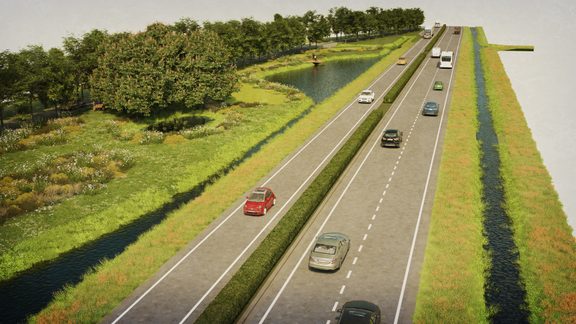
Other interesting articles
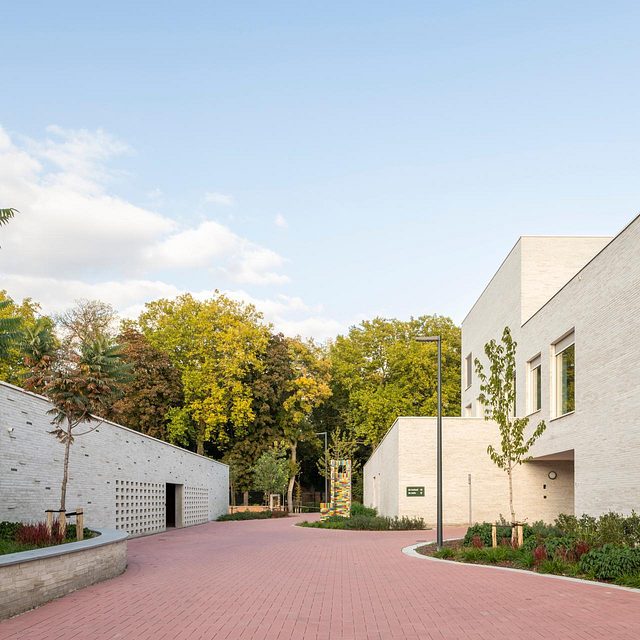
Child and Adolescent Mental Health Hospital: A Playful and Positive Design Strategy
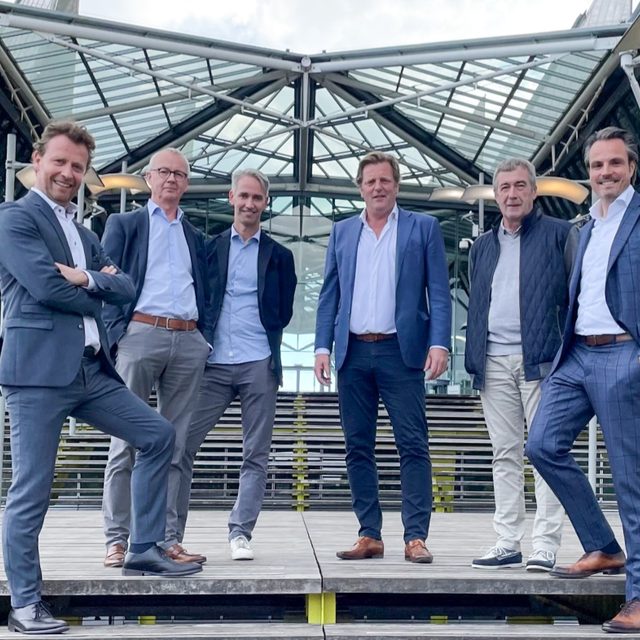
With the acquisition of Van Looy Group and Exilab, VK architects+engineers is further specializing in logistics and lab projects.
